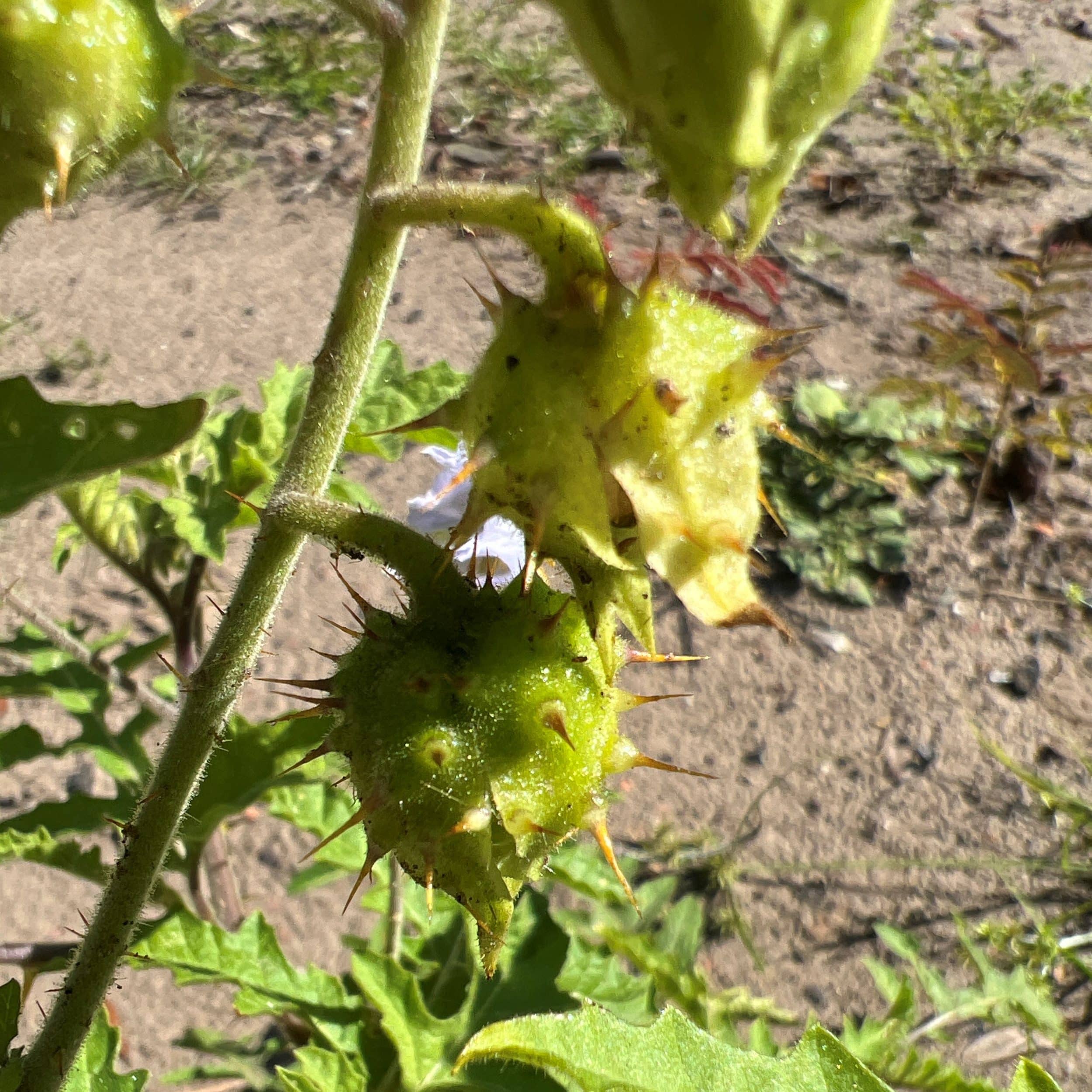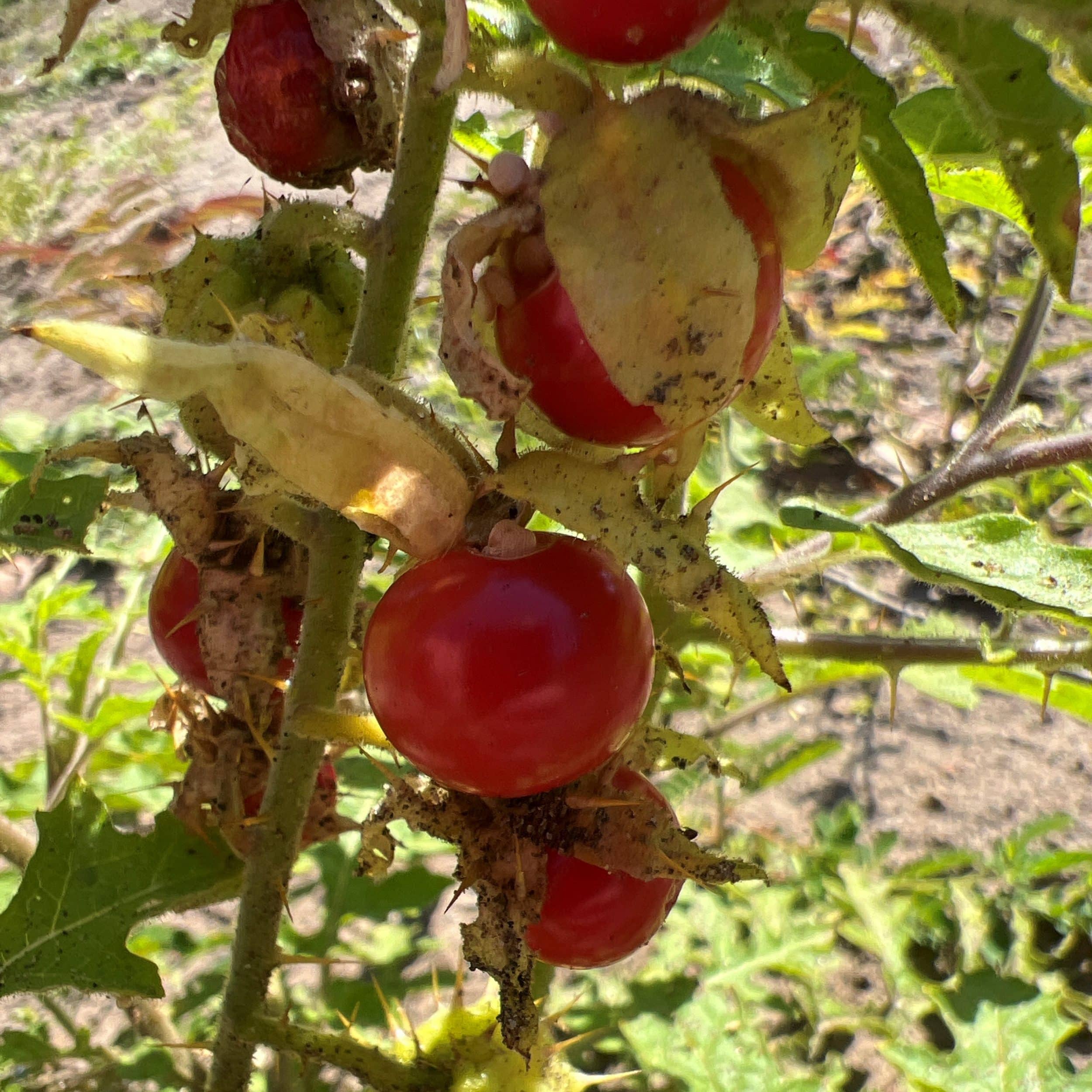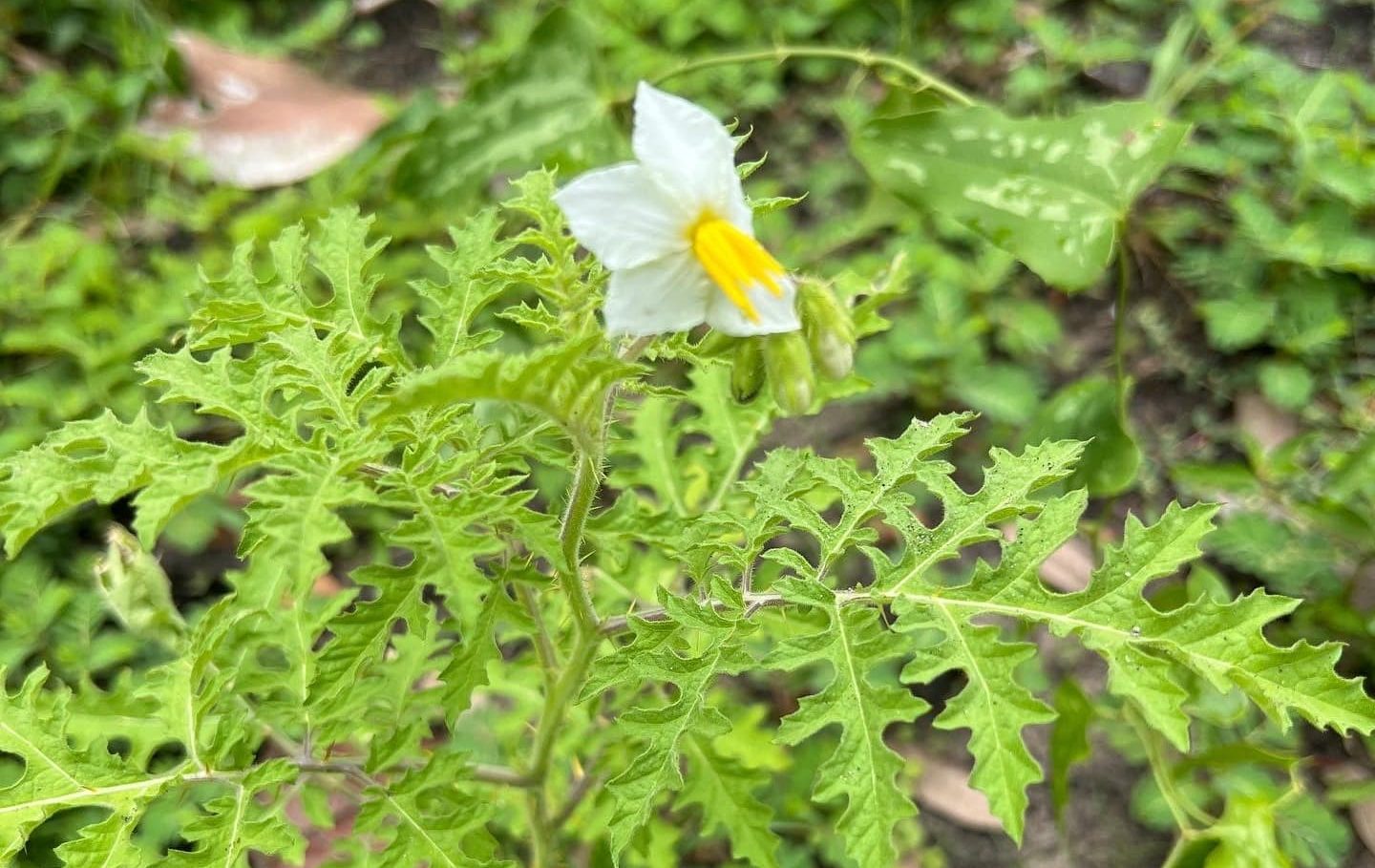Tomato lovers may not realize that they are eating a fruit from a family of toxic plants – the Nightshades. Yes, that common name implies exactly what you think – you close your eyes one last time. Although many of the large number of species in this global family of plants are toxic, garden tomatoes (and their many varieties) are one of several species that make up a large part of our diet.
Included in this group are potatoes, eggplants, peppers, and tobacco. In case you doubt the science, check out the flowers of these plants, and your doubts should dissolve away. Flowers are key to relationships in plants and the flowers of these plants have “familiar” shapes.
This brings me to a couple of wild nightshades that pop up in disturbed places where the soils have been exposed and seeds of these pioneer species rapidly take hold. I visit these types of places often, and what catches my eyes are those “nightshade” or “tomato-like” flowers and fruit. Unlike garden tomatoes, all of them also sport some level of spines that help ward off would-be insect or mammal consumers.
Of the three most common of these species, one stands out as being the spikiest of them all – Red Buffalo-Bur, also known as Vila Vila, Sticky Nightshade, and Fire-and-Ice Plant. Native to South America, this plant advertises its defenses with large and numerous, sharp spines (the burs) on all surfaces, including the capsule from which the red, tomato-like fruit emerges. You must really want to eat those. And unlike the other two locally found species, these fruits are edible.

Me not being a fan of tomatoes, I cannot say, but these fruits reportedly taste like sour cherries or somewhat like tomatoes. I will take that on faith. As for the fruits of American Black Nightshade (black when ripe) and Carolina Horsenettle (yellow when ripe), they are toxic. So, red is good, black and yellow, not good. The latter two species are native to the U.S., but like their non-native cousin, also grow on disturbed ground.

Being edible is not, however, a plant’s only virtue. In the case of Red Buffalo-Bur, the plant has its fans in agriculture and gardening. It is touted as what is called a trap crop for other common edible garden relatives. As such, this close relative acts to attract common pest insects to them instead of the preferred crop. In commercial operations, the congregation of pests are treated with insecticides to reduce their numbers and impacts on the crop. The Vila Vila Facebook page was established to share information about this practice.
Although that is a worthy practice for gardeners, this species remains an invasive species in most places outside of its native lands. But as with the insects and mammals that may think twice about trying to eat its pieces and parts, humans wishing to remove them from their landscape should also be respectful of their defenses. From personal experience, even heavy gloves do not always work.
But alas, unless the plant is in the wrong place, it is quite beautiful. The flowers, fruit, stems, leaves and the entire plant is attractive – from a safe distance.
Hope to see you in our great outdoors!




